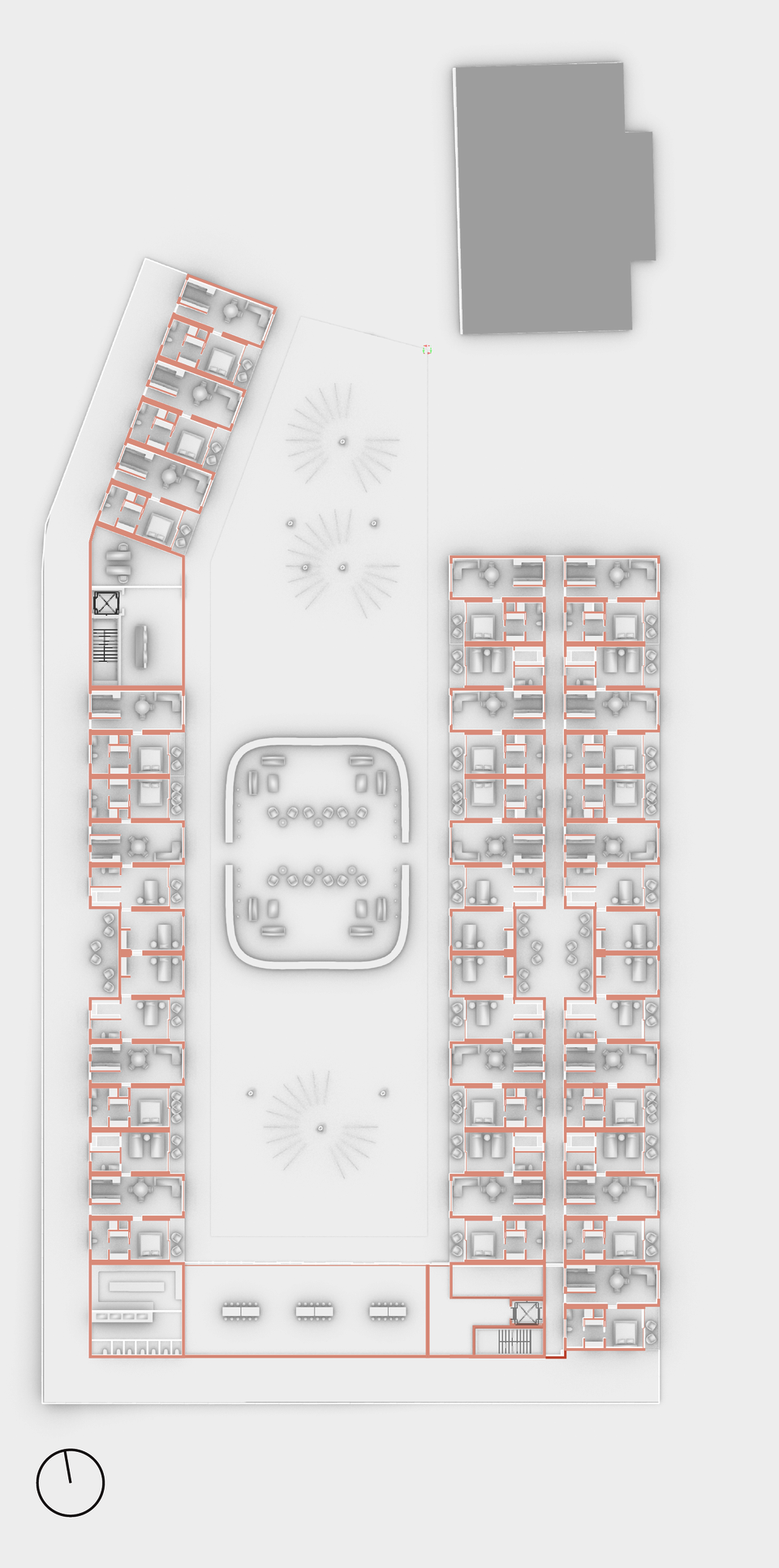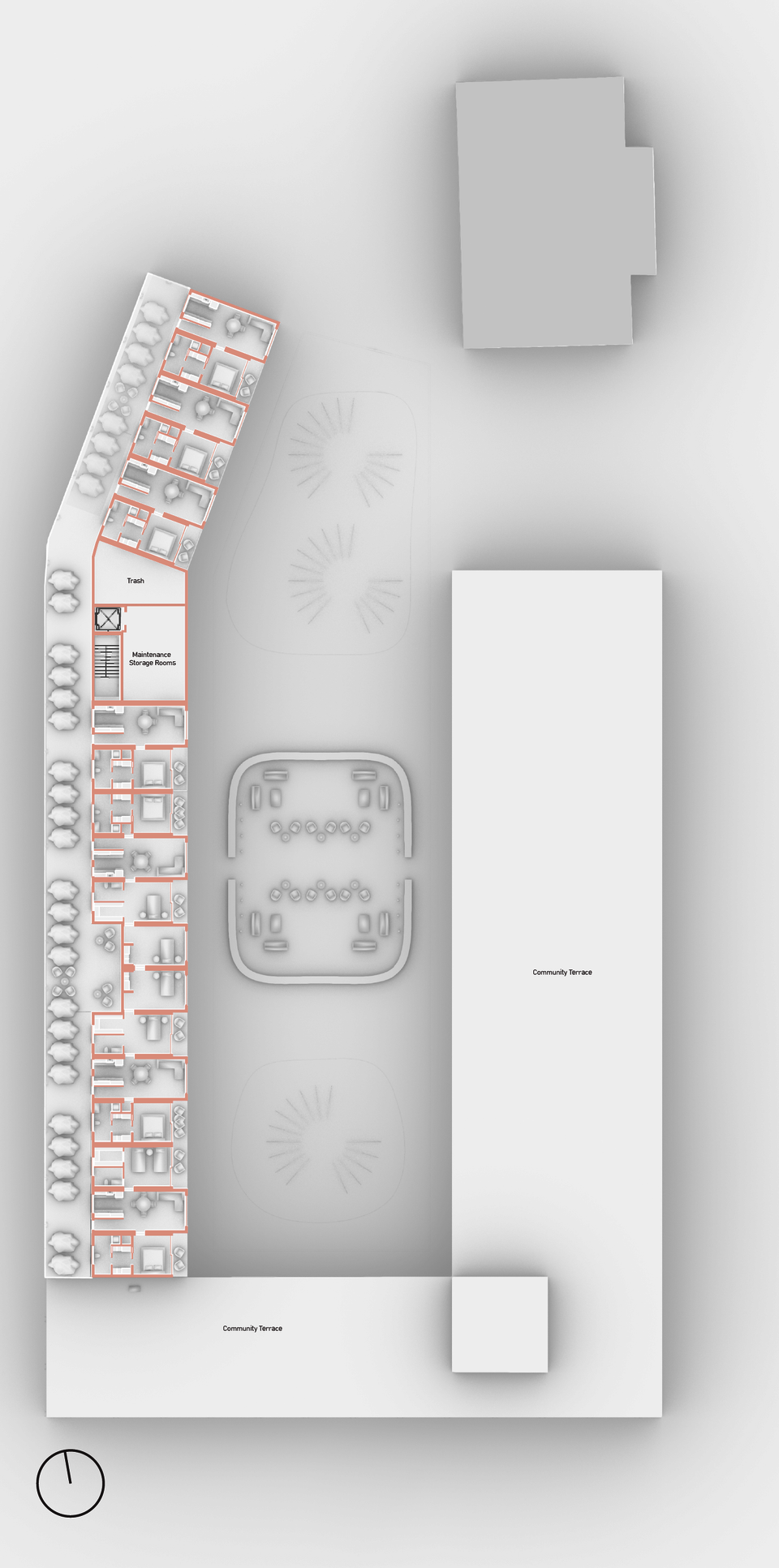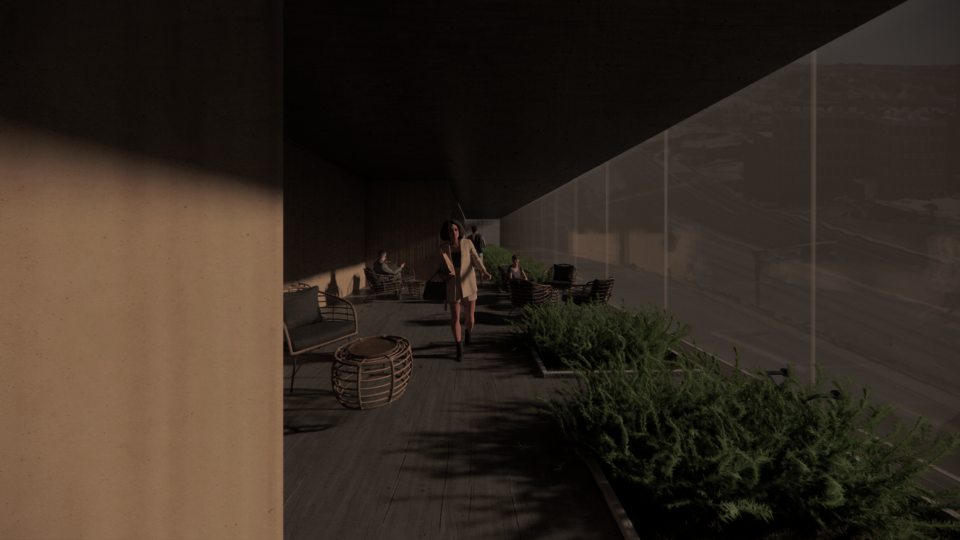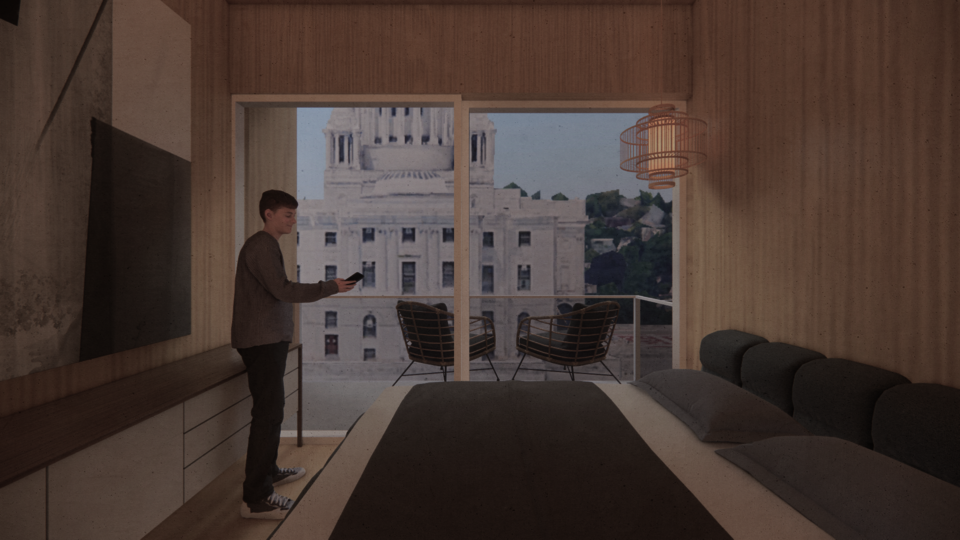Sofia Kiblisky
Activating Forces
The proposed housing development occupies an essential block facing the west side of the Rhode Island State House and is developed to house low-income families. The complex comprises 92 units including one, two and three bedrooms. The concept is broken up into an eight-story building and places an emphasis on various common spaces, including winter gardens and a central courtyard. Each unit is prefabricated and composed of cross-laminated timber to save costs, reduce construction time, increase quality, and produce less waste. The distinctiveness in the units and the balconies allows for an intricate and playful façade.
Image
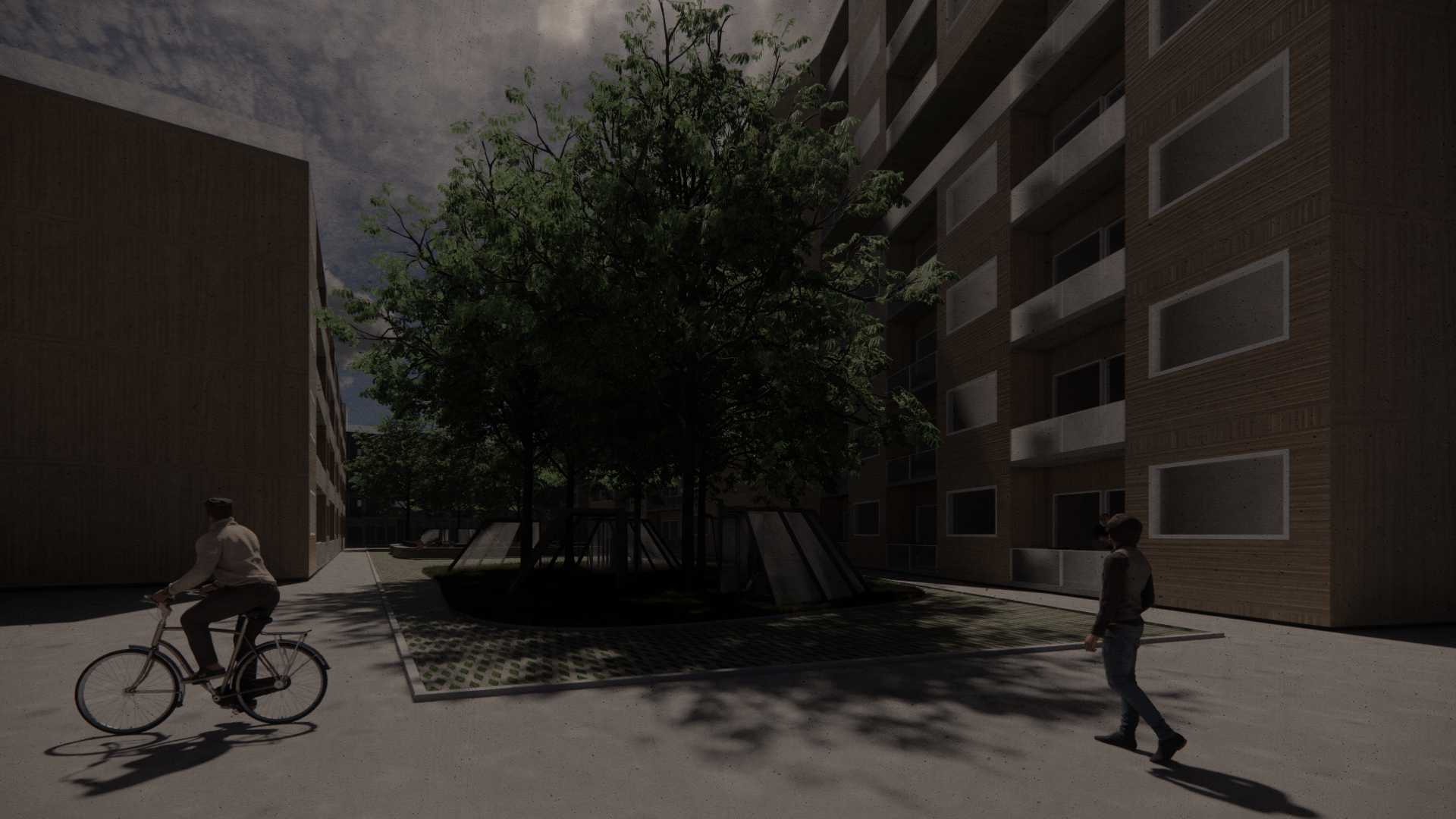
This view highlights the space allotted for community engagement within the housing complex. The courtyard area features three sections which are all created as lounge spaces. The central courtyard is meant for gathering including outdoor cooking spaces. The side courtyards include covered pavilions wrapping the trees for both sitting and reading spaces.
Rhode Island State House Concept diagram
Mission Statement: To return the Governmental House of the people back to the public, the project aims at creating both public and private opportunities to activate the campus. The project inverts the current condition instead of an isolated inward-looking jewel, the State House Campus turns outwards beckoning the public to explore what is rightfully their space, within.
Image
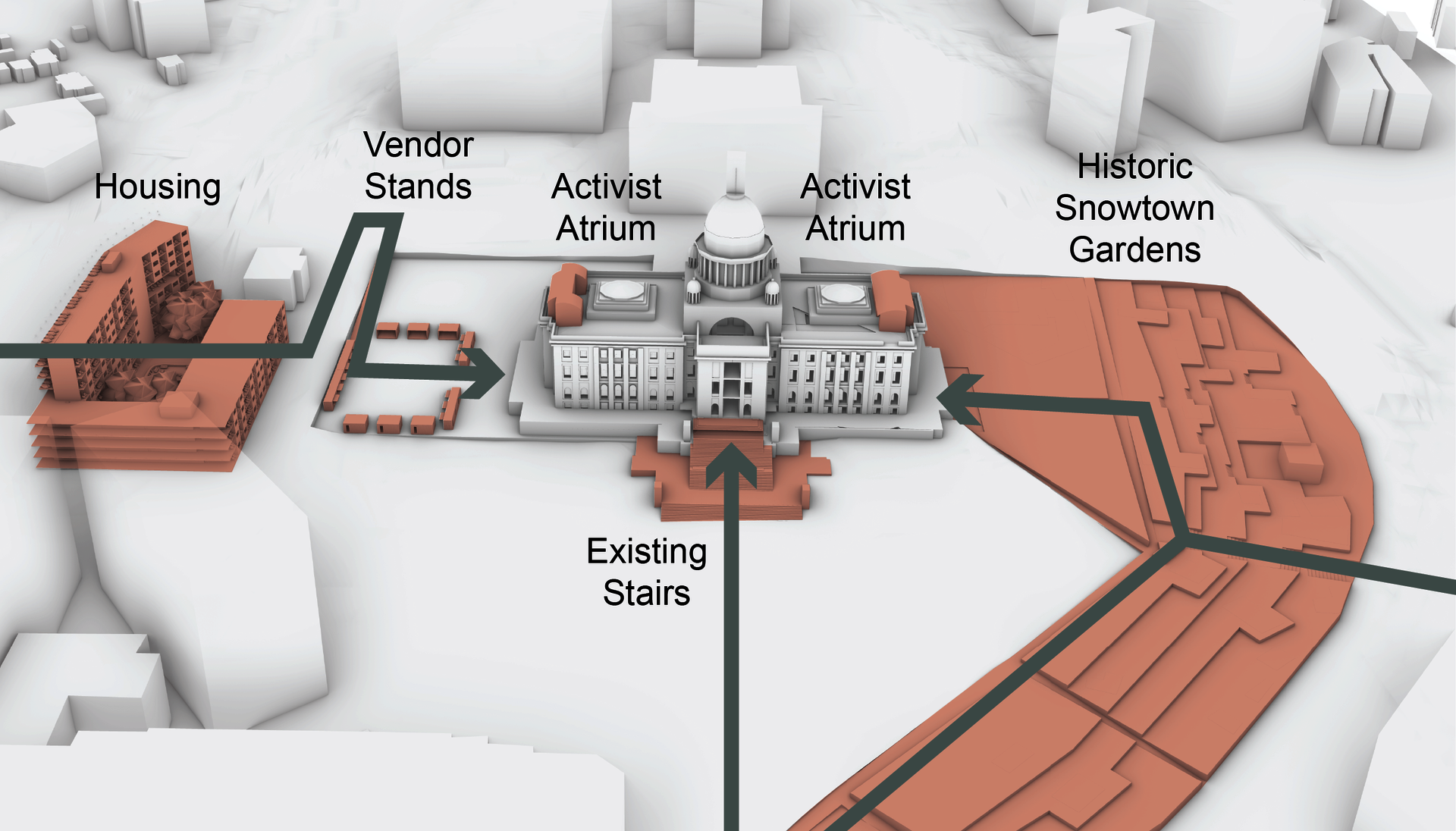
This diagram highlights the proposed structures and connections being created around the Rhode Island State House. On the left side the connection created by the housing focuses on connecting Smith Hill and on the right side the connections include the train station and Kennedy plaza. The right side also includes gardens to resemble the historic snowtown gardens that previously existed on the site.
Prefabricated Housing Unit
The units are all prefabricated and made of cross laminated timber which in essence uses billions of lumber that are rotting away. The CLT is cut and glued and then pressed to create large panels and becomes a very strong material as well as a fire resistant material. The construction is off-site which allows for lower costs, better time frames, and higher quality. The wood is a renewable resource with a net carbon reduction. By merging the modular design with prefabricated CLT the units take on a sustainable approach and create a desirable aesthetic. The units are stacked which allows for the wet walls to be strategically stacked. They also include large factory installed windows with balconies which allow for a variation in the facade.
Image
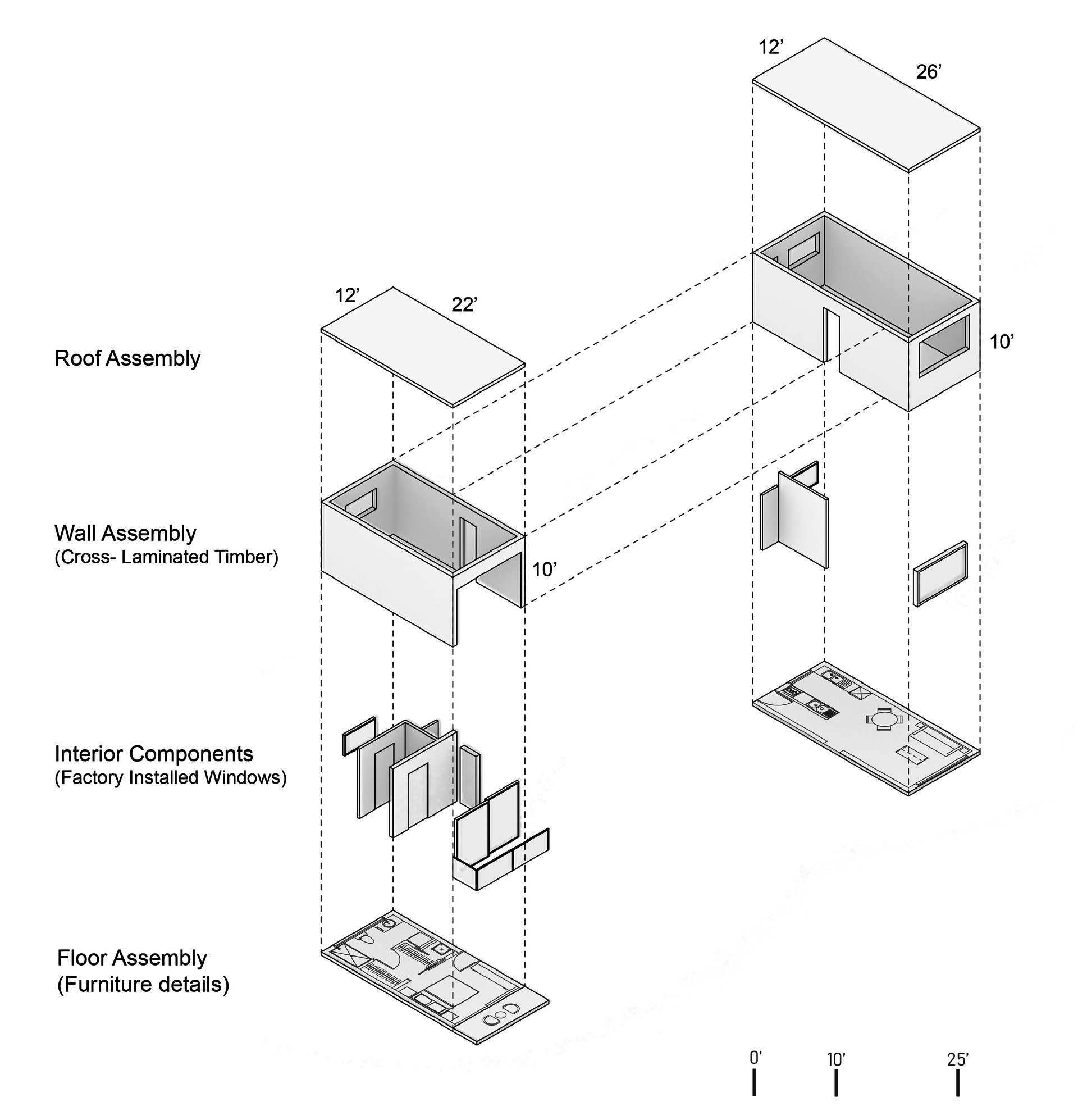
This diagram explains how the prefabricated unit comes together and each of its components.
Unit Plans
The diagram above highlights the different unit plans in the housing complex. The complex includes 92 units ranging from one, two, and three bedrooms. The unit's overall dimensions as well as the individual dimensions of each area are derived by the needs and the guidelines from the RIHousing department. Each unit includes at least one balcony that overlooks the community courtyard or the Rhode Island State House. The units also have windows that look into the hallways which are winter gardens for the community.
Image
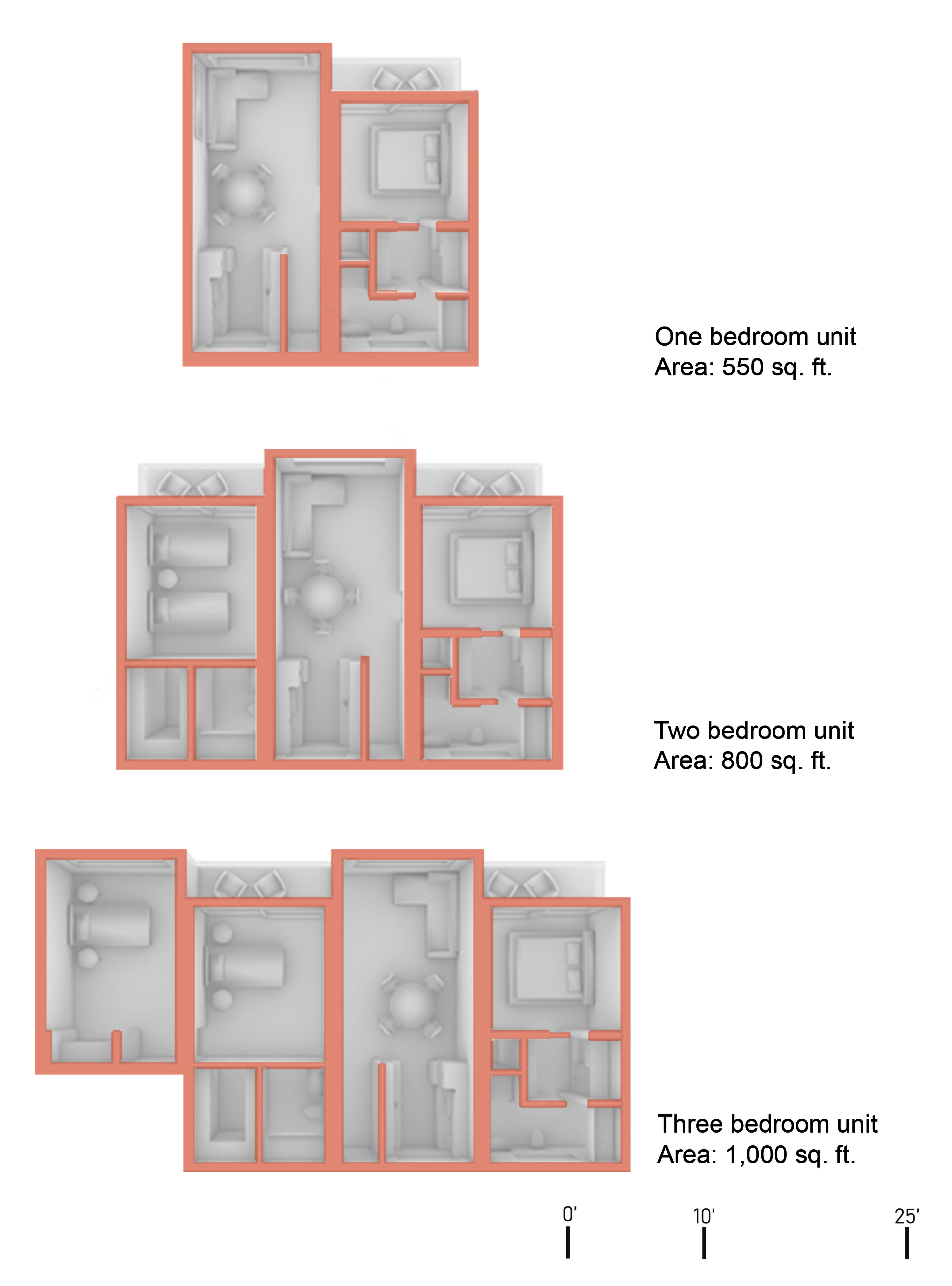
The diagram above highlights the different types of units in the complex ranging from one, two, or three bedrooms.
Supporting Documents: Section Perspective, Site plan, Floor plans & Renders
- Architecture
- Ceramics
- Design Engineering
- Digital + Media
- Furniture Design
- Global Arts and Cultures
- Glass
- Graphic Design
- Industrial Design
- Interior Architecture
- Jewelry + Metalsmithing
- Landscape Architecture
- Nature-Culture-Sustainability Studies
- Painting
- Photography
- Printmaking
- Sculpture
- TLAD
- Textiles


